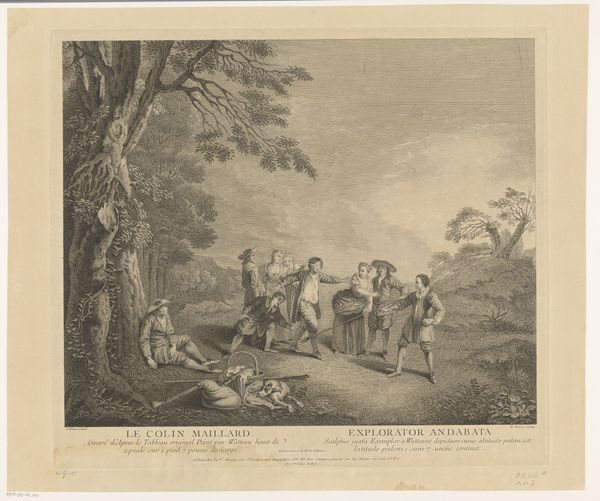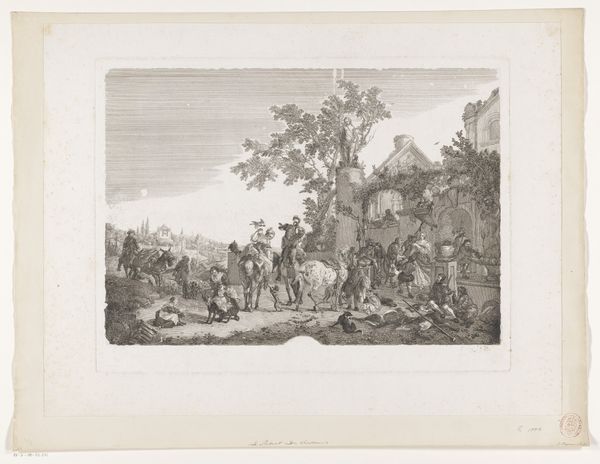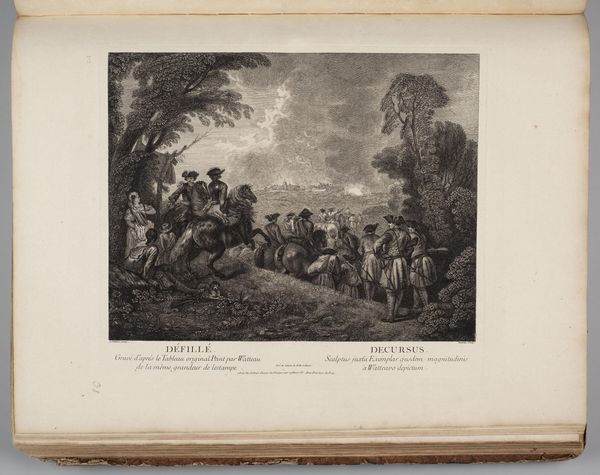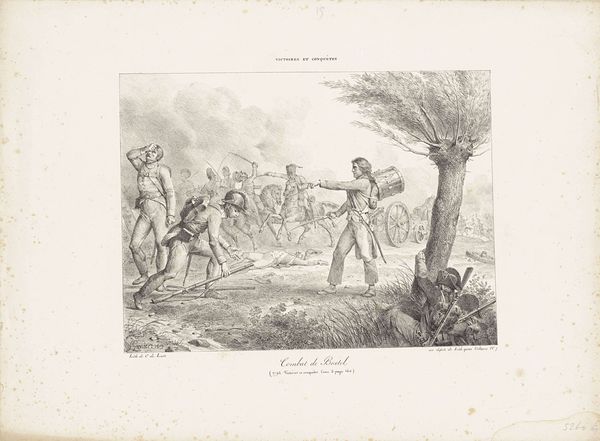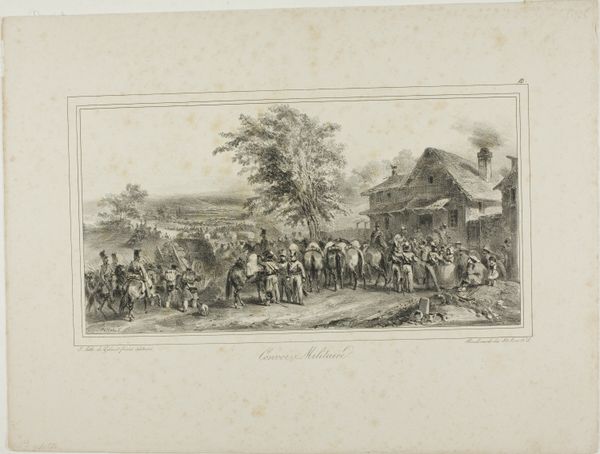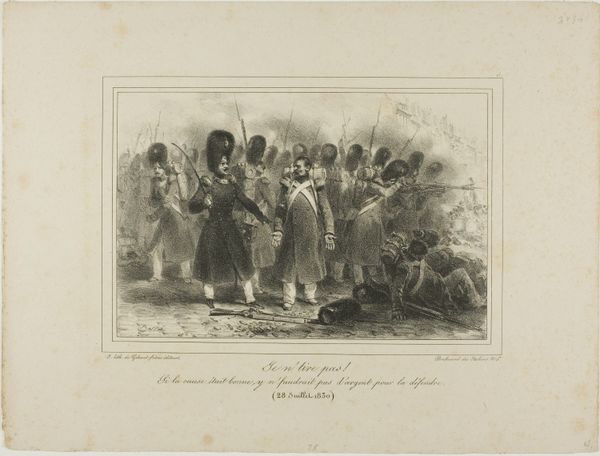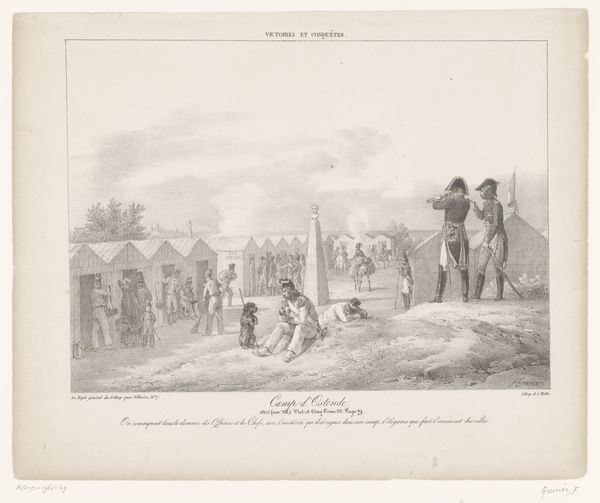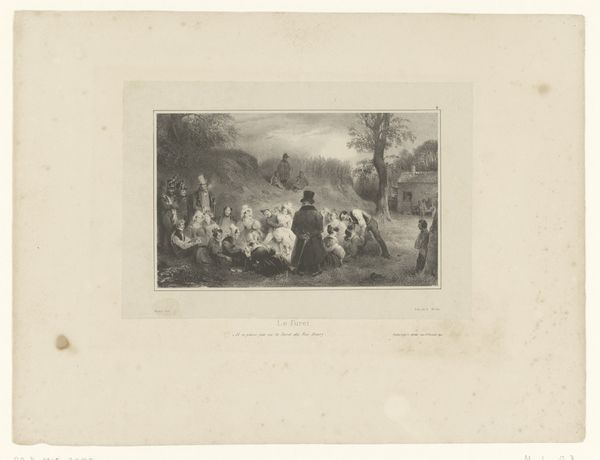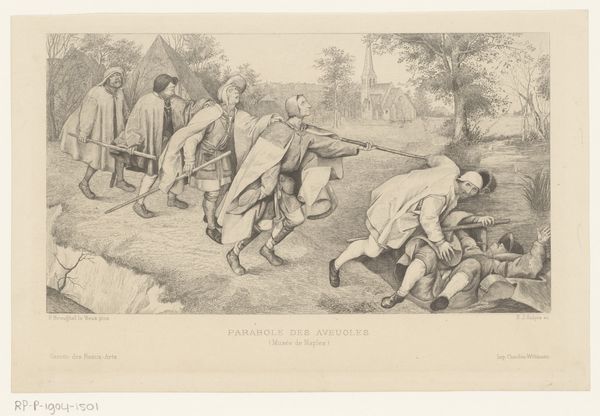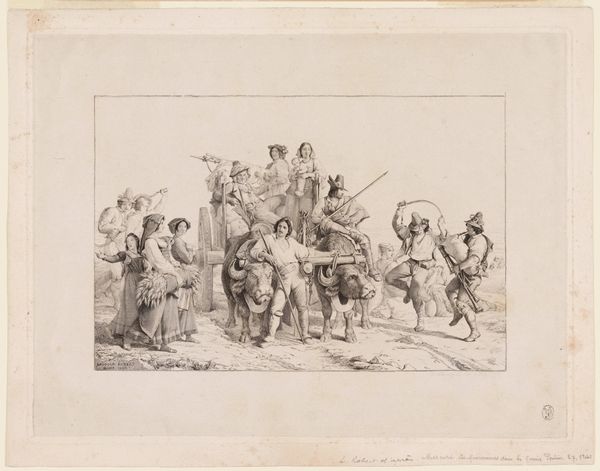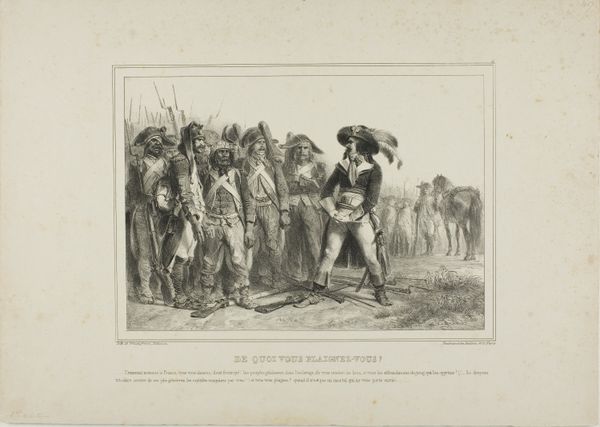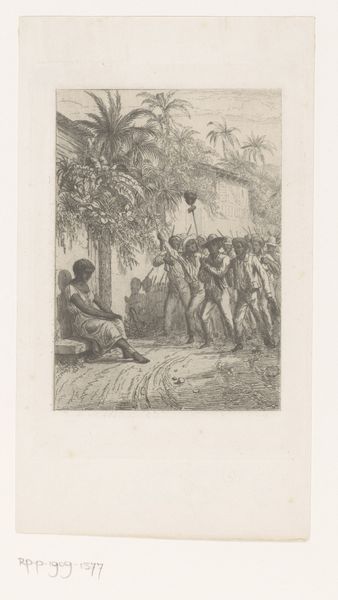
print, etching
# print
#
etching
#
asian-art
#
landscape
Dimensions: height 288 mm, width 383 mm
Copyright: Rijks Museum: Open Domain
Editor: So, this is "Dansende Indonesische mannen op Solor," made before 1844 by Aeschinus Saagmans Mulder. It's an etching and it’s currently at the Rijksmuseum. It looks quite observational, like a record of an event. What's striking to me is how it seems to document a scene without necessarily engaging with it. What are your initial thoughts when you look at this print? Curator: What immediately stands out to me is the framing – or perhaps, more accurately, the act of framing – by the artist, and how it speaks to the colonial gaze. Consider when this was made; Dutch presence in Indonesia was solidifying, shaping political and social realities. Prints like these played a critical role in constructing the West's understanding of 'the Other'. What aspects of the composition do you think contribute to this framing? Editor: I guess the positioning of the viewer. We are definitely observing them, and there's a slight distance. The inclusion of the title at the bottom almost feels like labeling in a scientific study, rather than an invitation to empathize. So, do you see this as contributing to some sort of justification for colonial intervention? Curator: Precisely. Visual depictions often legitimized imperial narratives. The seemingly objective rendering masks inherent biases, influencing public opinion back in Europe and subtly justifying colonial endeavors as bringing 'civilization' or simply recording ethnographic data. Who controls the image controls the narrative. Does that shift your initial reading at all? Editor: Absolutely. I hadn't thought about it so much as a power dynamic at play, but it makes perfect sense in this historical context. The "realism" becomes problematic. It makes me think more critically about how these images were used and consumed. Curator: And that critical reflection is exactly the point. Recognizing how images participated in the historical power structures can hopefully lead to challenging the modern ones that persist to this day.
Comments
No comments
Be the first to comment and join the conversation on the ultimate creative platform.
